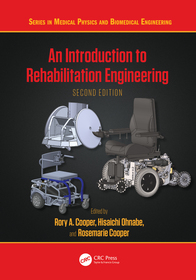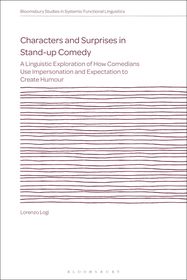
An Introduction to Rehabilitation Engineering
Series: Series in Medical Physics and Biomedical Engineering;
- Publisher's listprice GBP 91.99
-
43 948 Ft (41 855 Ft + 5% VAT)
The price is estimated because at the time of ordering we do not know what conversion rates will apply to HUF / product currency when the book arrives. In case HUF is weaker, the price increases slightly, in case HUF is stronger, the price goes lower slightly.
- Discount 10% (cc. 4 395 Ft off)
- Discounted price 39 553 Ft (37 670 Ft + 5% VAT)
Subcribe now and take benefit of a favourable price.
Subscribe
43 948 Ft

Availability
Not yet published.
Why don't you give exact delivery time?
Delivery time is estimated on our previous experiences. We give estimations only, because we order from outside Hungary, and the delivery time mainly depends on how quickly the publisher supplies the book. Faster or slower deliveries both happen, but we do our best to supply as quickly as possible.
Product details:
- Edition number 2
- Publisher CRC Press
- Date of Publication 12 November 2025
- ISBN 9781032121529
- Binding Hardback
- No. of pages380 pages
- Size 254x178 mm
- Language English
- Illustrations 113 Illustrations, black & white; 92 Halftones, black & white; 21 Line drawings, black & white; 25 Tables, black & white 700
Categories
Short description:
Introduction to Rehabilitation Engineering, Second Edition offers a concise yet thorough foundation in a critical and rapidly evolving field—inviting further exploration, innovation, and impact.
MoreLong description:
In response to the growing demand for a foundational resource in rehabilitation engineering, Dr. Cooper – renowned innovator and leader in the field – joins a team of knowledgeable contributors to present the fully updated Introduction to Rehabilitation Engineering, Second Edition. This comprehensive guide introduces both foundational principles and real-world applications of rehabilitation engineering (RE), making it an essential text for students, educators and professionals alike. Covering 18 in-depth chapters, this edition explores key areas such as wheeled mobility, prosthetics, orthotics, rehabilitation robotics, accessible transportation, universal design, digital accessibility and adaptive sports technologies. It integrates core concepts like the PHAATE model and participatory action design and engineering (PADE) with practical insight into standards, service delivery, ergonomics and universal design while providing a well-rounded understanding of how engineering can improve function, independence and quality of life.
Structured with clear learning objectives, chapter-end study questions and a comprehensive glossary, this book supports both academic instruction and lifelong learning. With a focus on usercentered design and interdisciplinary collaboration, it equips readers to meet the challenges of modern rehabilitation engineering with creativity, understanding and technical expertise. Whether beginning a journey in rehabilitation engineering or seeking to deepen knowledge, Introduction to Rehabilitation Engineering, Second Edition, offers a concise yet thorough foundation in a critical and rapidly evolving field – inviting further exploration, innovation and impact. These features make the book a valuable resource for students, practitioners and anyone interested in the field of rehabilitation engineering.
Key Features:
• Covers essential topics such as device design, service delivery models, universal design principles and technology transfer mechanisms.
• Emphasizes real-world applications of RE, including areas like wheelchair design, prosthetics and orthotics, web accessibility and communications technology, robotics in rehabilitation and adaptive sports, offering readers a tangible understanding of how these technologies impact daily life.
• Serves as a concise yet thorough introduction, providing readers with a solid foundational understanding of RE, while stimulating further exploration and research in the field.
MoreTable of Contents:
Chapter 1: Participatory Action Design & Engineering. Chapter 2: Rehabilitation Engineering in Practice. Chapter 3: Accessible Home and Worksite Design. Chapter 4: Technology Transfer. Chapter 5: Standard for Assistive Technology. Chapter 6: Seating Biomechanics and Systems. Chapter 7: Tissue Integrity Movement. Chapter 8: Wheelchairs. Chapter 9: Therapeutic Electrical Simulation. Chapter 10: Accessible Vehicles and Transportation Systems. Chapter 11: Rehabilitation Robotics. Chapter 12: Major Limb Prosthetic Devices. Chapter 13: Orthotic Devices. Chapter 14: Aids for People Who Are Blind or Visually Impaired. Chapter 15: Maximising Participation for People with Hearing Loss. Chapter 16: Information-Communication Technology and Digital Accessibility. Chapter 17: Augmentative and Alternative Communication Technology. Chapter 18: Adaptive Sports and Recreation Technology.
More




